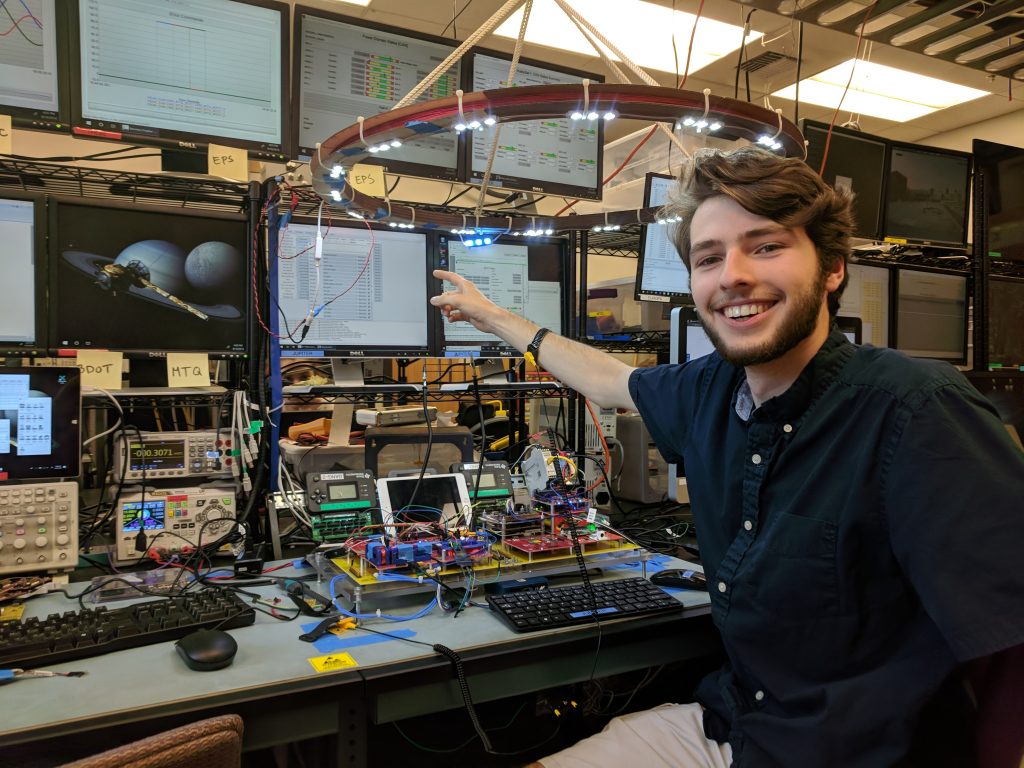
In the latest Allen School undergrad spotlight, Nathan Wacker, can proudly say he’s helped build something that is truly out of this world. The third-year Allen School student from Seattle worked on HuskySat-1, a 3U CubeSat that was launched into space on November 2, 2019 and left Northrup Gruman’s Cygnus cargo spacecraft on January 31.
Allen School: What interested you in working on HuskySat-1, and what was your job in the Husky Satellite Lab?
Nathan Wacker: I was interested in joining because I wanted to work on something that was going to space. It still feels surreal to say that I have done it. Working at the lab seemed more tangible than most of the programing I had done up to that point.
Since I joined the team in the fall of 2017, I have worked on the flight software for the power distribution system, plasma thruster and various other systems on the spacecraft. I also worked quite extensively on our ground station command and control software. Since we are now in space, I have been maintaining the ground station and leading satellite operations.
Allen School: What was it like watching the cargo craft launch from NASA’s Wallop Flight Facility last November, knowing HuskySat-1 was on it?
NW: Folks from the lab that weren’t able to attend the launch in person, myself included, gathered in a basement classroom at 6:30 a.m. Saturday, November 2 to watch the NASA stream live. There was a lot of excitement in the room as the rocket disappeared into the clouds, but it was hard not to think about the failure scenarios and how we wouldn’t know until months later whether our satellite had survived.
Allen School: What kind of information have you learned since the satellite’s deployment?
NW: Deployment from Cygnus occurred on January 31 and we made first contact several hours later. Since then, we have determined that the power system is healthy, the primary communications system works, and that we are sitting at a cozy temperature — for space. We have also commissioned the camera and taken some low-resolution images of earth.
Allen School: What are some unique lessons you learned while on the satellite team that you might not have experienced anywhere else?
NW: A few lessons I have learned are: Don’t prematurely optimize, don’t over-engineer, document early and often, test everything. Also, the ability and drive to learn is more valuable than knowledge. These lessons all came from working on a long-term and large-scale project, which is difficult to teach in a classroom.
Allen School: Several academic areas would allow you to work on a project like HuskySat-1, why did you choose to major in computer science?
NW: Computer programming has always been appealing because smaller-scale projects can be put together quickly and iterated on at no cost other than the computer. Growing up, that was a much quicker path to gratification than woodworking or electronics projects, for instance, but still scratched an itch of mine to build something.
Allen School: What do you like most about being in the Allen School?
NW: The education is excellent. As a student, it is extremely rewarding to take classes from people who have significantly advanced their field and still care about student success. Upper-division CSE classes are the most interesting classes I have taken at UW.
Allen School: What are some of your favorite activities or experiences here at the UW?
NW: The Husky Satellite Lab has by far been my most fulfilling experience here at UW. Not only has it been a great engineering experience that has informed my career interests, but I have also had the pleasure of getting to know the talented individuals I work with in a professional and social context.
Read more about HuskySat-1 and follow the live orbital tracker to stay up-to-date on the satellite’s mission. We are proud to have Nathan as a member of the Allen School community!

